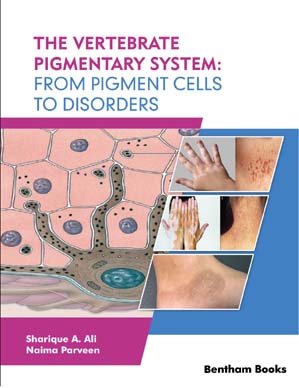Abstract
Skin pigmentation contributes predominantly to the health and quality of life of human beings. Melanin imparts color to the skin, which is produced during the process of melanogenesis by the specialized cells, melanocytes. Many endogenous and exogenous factors released from epidermal and dermal components regulate constitutive skin pigmentation. The dysregulation of these factors followed by irregular production and distribution of melanin leads to the onset of pigmentary disorders such as hyperpigmentation or hypopigmentation. Pigmentation disorders include the entities that are characterized by a pathological change in melanocytes to produce melanin. Excess production of melanin leads to hyperpigmentary disorders and less or lack of melanin leads to hypopigmentary disorders. The present chapter is dedicated to the introduction and discussion of various pigmentary disorders with an overview of their etiologies and pathogenesis.
Keywords: Dysre gulation, Hyperpigmentation, Hypopigmentation, Melanogenesis, Pigmentation.






















